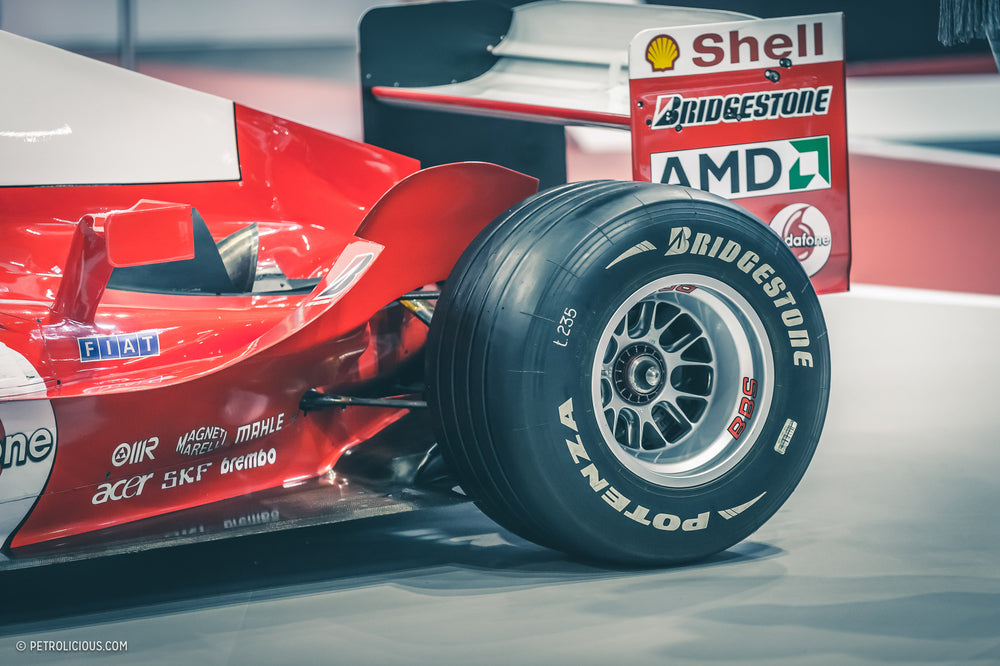Isn’t it funny how you come to appreciate certain things a lot more with time? Tastes change, opinions morph and we can reconcile with things once reviled. Take sport for instance: nobody but nobody likes to see the same old people winning without a fight, dominance is boring. In the moment at least. But my oh my how that can change with the application of time and a hint of fuchsia across your spectacles. Sometimes an accomplishment is so complete and so spectacular, a bit of time is necessary to let it sink in. An example of this phenomenon was presented to the visitors of the Autosport International show this past week, in the form of the gorgeous red devil that is the Ferrari F2004.








It’s no secret as to just how dominant the men from Maranello were in Grand Prix racing at the beginning of this century. Five world driver’s championships at the hands of Michael Schumacher, and six constructor’s titles from 1999 to 2004. Not even Fangio managed five titles on the bounce, and nobody has ever equalled a run of six consecutive constructor’s efforts either. For a team with as much clout and history as Ferrari, success of this scale had been a long time coming, with the Tifosi having waited since 1979 for a world champion driver, that last came in the shape of Jody Scheckter. For five glorious years at the start of the noughties though, the prancing horse, with Schumacher as it’s jockey, trampled all before it, and boy did I love to hate them.
The F2004 then, is possibly the greatest of all of the cars that helped make that happen, with 15 winner’s trophies of the 18 available that year heading to Italy. Schumacher himself won a record 13 races—equalled just once since by Sebastian Vettel (although there was one more race that season). One could argue that the F2002 was just as successful, but the F2004 was the culmination of advances on all of those F2xxx chassis, an inheritance of characteristics and DNA that ensured it was not just a winner, but a dominant one.



Today the car is a symbol of magnificence. It bears the scars of use, a patina this thoroughbred wears proudly, and I am transported back to screaming sound of a three-liter V10 hurdling through the gears as it propels its carbon fibre composite chassis out of the Lesmo at Monza, before cascading back down the box on the approach to Ascari—a wonderful cacophony that the modern cars cannot get close to. The trumpets that played this beautiful fanfare exit in tandem, at the rear of the sidepods, a splendor of symmetry and purposefulness. 920 horses were unleashed at 19,100 RPM by the 053 engine, transmitted to the floor through sticky Bridgestone slippers. The car had been specifically designed to get better life out of these, with a more efficient aero package and lighter weight than its predecessor. At just 605kg wringing wet, with driver, the power to weight ratio is staggering.






From the front it is sleek, neat even—with far less aero pieces spoiling the lines compared to the current generation of cars, it is a far prettier construction. From the rear it sits squat and purposeful, muscular and authoritative. It is a view of this car that is not unfamiliar for most of the drivers on the grid in ’04, intolerable at the time I would imagine, but I am sure that their feelings towards the car have changed since, just like mine have. Ross Brawn’s creation is still a record-holder to this day, with lap records at five tracks in the current Grand Prix circus belonging to the machine.







It seems then that he and his team, including Rory Byrne and Aldo Costa, produced and developed a car that not only satisfied its brief with aplomb, but did so in a fashion that could scarcely have been imagined when pencil first went to paper.
This car was and is special. I feel a certain humility in its presence and it is a real privilege to be allowed up so close to photograph it whilst other visitors to the show have to gaze from a distance behind red tape. I linger around it for almost an hour as I take it all in, my mind drifting back to the season that came to belong to it. That belong to the great Schumacher and to Ferrari. Its legacy is still very much being felt today and whilst at the minute Mercedes are in a fine run of form, I wonder if they can ever do what this car did. Even if they do, it won’t matter, for this machine will always now hold a place in my heart. I only wish I had allowed myself to enjoy it more at the time.





























































